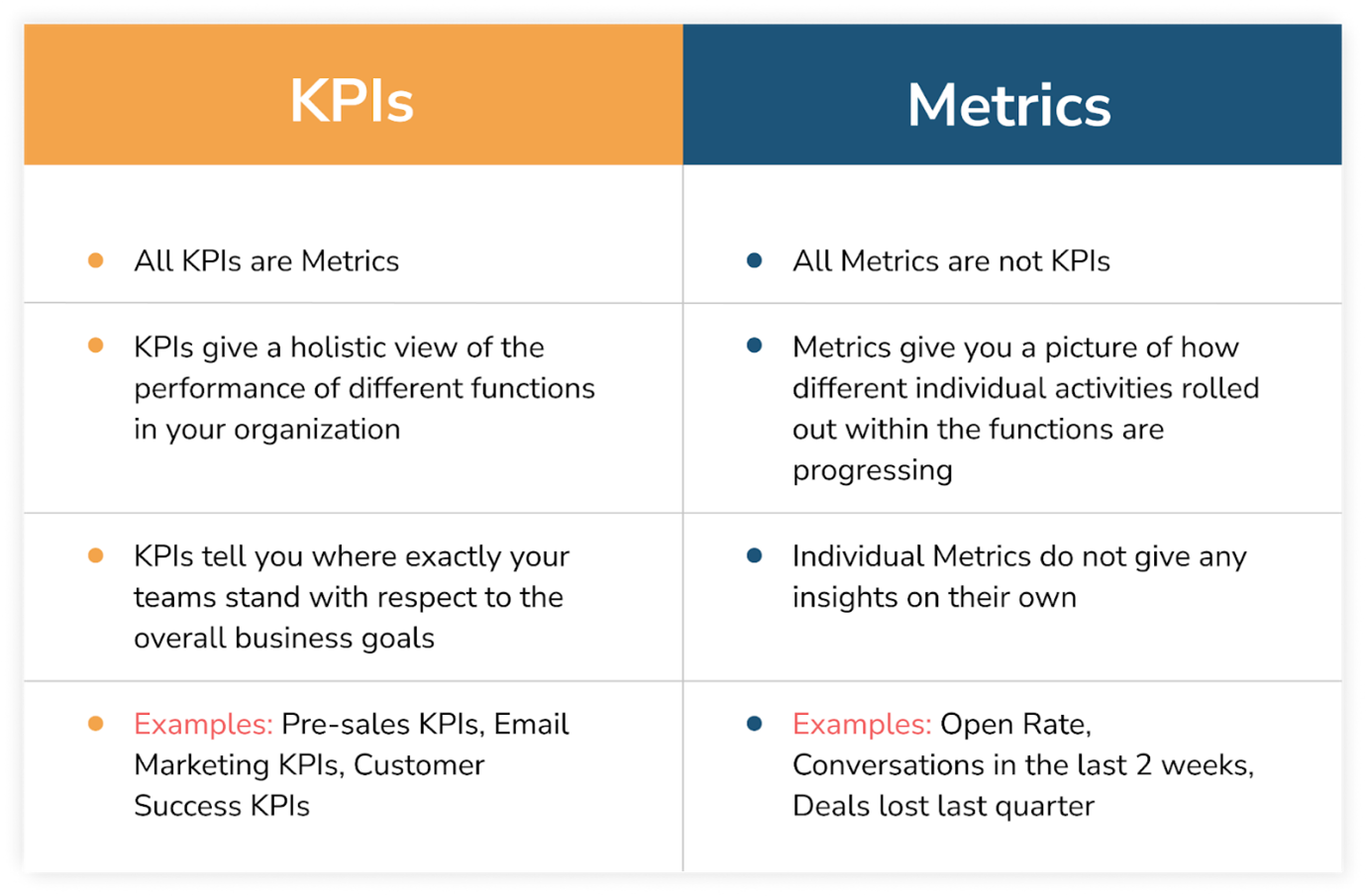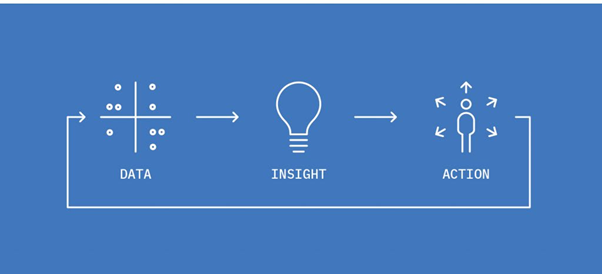When measuring the success of an SDR as a Service Campaign, it is important to track certain KPIs and metrics to ensure that the campaign is meeting its desired goals. Key Performance Indicators (KPIs) provide a comprehensive view of how your SDR as a Service campaign is performing, while individual metrics provide a more granular view into the success of specific elements of the campaign.
As a business, it’s essential to understand the performance metrics of your service provider's SDR. This is a crucial factor in ensuring that you are getting the most out of your service and that your SDR is operating at its full potential. Knowing the performance metrics of your SDR will allow you to track progress, adjust strategies, and make the right decisions. By keeping an eye on the performance metrics, you can quickly identify areas of improvement and use them interchangeably wherever necessary. This knowledge will also ensure that you remain competitive in the market and that your SDR is always providing the best possible service.

In this blog post, we'll explore the importance of KPIs and metrics, with some examples to illustrate their relevance. We'll also discuss how they can be leveraged to accurately measure your success. With this knowledge, you'll be able to make better decisions to help your business reach its goals.
Explain SDR as a Service and Its Importance in Sales and Marketing
SDR (Sales Development Representative) is an important service for sales and marketing teams. It is a process of identifying and qualifying leads to progress them through the sales funnel. SDR, or Sales Development Representative, is a service that helps companies increase sales and marketing efforts. It helps organizations identify and reach out to potential clients through outsourced lead generation and qualification processes besides lead nurturing them.

SDRs are important for businesses because:
1. Sales Development Representatives (SDRs) are an integral part of a company’s sales and marketing team. SDRs are responsible for connecting target customers with the right salespeople and driving leads to conversion. By using a combination of outbound and inbound tactics, SDRs generate viable leads and increase revenue.
2. SDRs play a vital role in the success of a company’s sales and marketing campaigns. They use data-driven lead generation tactics to identify and qualify leads and help prioritize and segment prospects. Through their expertise in lead generation, SDRs increase the chances of connecting with the right customer and closing a sale.

3. SDRs also provide valuable insights into customer behavior and trends. By monitoring customer interactions and tracking KPIs and metrics, SDRs can make well-informed recommendations on how to improve sales and marketing efforts.
4. SDRs are also essential for tracking and optimizing the success of an SEO campaign. By measuring website traffic, keywords, and backlinks, SDRs can identify which SEO strategies are working and which need to be improved. This helps companies build a successful SEO campaign that drives organic traffic and leads.
5. By using SDRs as part of their sales and marketing team, businesses can gain a competitive edge in their industry. SDRs provide valuable insights and data-driven strategies that can help businesses improve their sales and marketing performance. As such
They use tools and tactics such as cold calls, email blasts, social media marketing, and other methods to stay on top of the ever-evolving digital landscape. By utilizing an SDR service, companies can gain valuable insights into their target audience, track and measure their KPIs, and make informed decisions on how to drive sales and marketing success. SDR services are essential for companies that want to stay ahead in the competitive digital landscape.
Having said that, if you're a business owner, it's equally important to measure your SDR's performance, KPIs (Key Performance Indicators), and metrics. KPIs and metrics are two powerful tools that can be used to track your company's profitability and identify areas of improvement.
Key KPIs and Metrics for Measuring SDR as a Service Campaign Success
In an SEO-focused blog post about KPIs and metrics, it is important to measure SDR as a Service Campaign success. Key performance indicators (KPIs) that should be tracked include click-through rate (CTR), time on page, bounce rate, and search engine rankings. Additionally, it is important to track key metrics such as the number of leads generated, cost per lead, conversion rate, and customer lifetime value. By tracking these KPIs and metrics, marketers can gain a better understanding of how their SDR as a Service Campaigns are performing and can make adjustments accordingly.
Qualified leads
Qualified leads are a key metric for the measurements of campaign performance via various communication channels. Qualified leads are an important KPI to track when optimizing a website for search engine rankings. Qualified leads represent users who have taken the initiative to engage with a website or brand and are likely to be the most valuable clients. By tracking qualified leads, businesses can measure the effectiveness of their SEO campaigns and make adjustments as needed.
Additionally, tracking qualified leads gives businesses insight into how their target audiences are engaging with their content, allowing them to tailor their SEO strategies to meet their customers' needs. Knowing which keywords, content, and campaigns are driving the quantitative qualified leads can help inform future strategies and lead to better business results. With a qualified lead generation strategy in place, you can ensure that your marketing strategy is actionable and directed towards leads that are most likely to become clients.
Conversion rate
Conversion rate is an important metric to track when optimizing your marketing campaigns. It is a measure of website visitors visiting your site taking a desired action, such as making a purchase, signing up for a newsletter, or downloading case studies. By tracking this data, you can get a better understanding of how your website is performing and identify areas for improvement. You can also use it to compare your performance to that of competitors and to determine the effectiveness of your SEO efforts.
If your conversion rate is low, it may be an indication that your marketing strategy needs to be re-evaluated. By monitoring this metric regularly, you can make changes and improvements to ensure that your website is optimized for SEO success.
Cost per lead
Cost per lead is an important KPI to track when measuring the success of a marketing campaign. It is the amount spent on a particular campaign divided by the number of leads generated by that campaign. It is a metric that helps determine the overall ROI of a campaign.
Understanding the cost per lead of a campaign is essential for making decisions about budgeting, targeting, and overall campaign strategy. Knowing the cost per lead is also important for understanding what resources are necessary to optimize a campaign for success.
Sales Cycle length
The length of the sales cycle for SEO-focused operations can vary depending on a variety of factors, such as the complexity of the project, the size of the organization, and the amount of work required. Companies should monitor the length of the sales cycle to ensure they are providing the best possible client experience and to identify any areas that need to be improved. If the sales cycle is too long, it can lead to lost opportunities and a decrease in sales.
On the other hand, if the sales cycle is too short, it can lead to a lack of quality interactions and opportunities to properly explain the benefits of working with the organization. Monitoring the sales cycle length can provide valuable insights into the buyer's journey and help companies optimize their sales process.
Response time
Response time is an important KPI to track and monitor to optimize website performance. It measures the time it takes for a web page to respond to a request from a user or a service. This metric is especially important for SEO because it affects the user experience, which impacts the overall ranking of the website in search engine results. Response time should be monitored regularly to ensure that the website is performing as expected and that any issues can be identified and addressed quickly. Additionally, it is important to use a reliable monitoring tool to ensure that response times are accurately measured.
By monitoring and optimizing response time, you can ensure that your campaign is performing as expected and that users have a positive experience when visiting your website. This can improve your ranking in search engine results, leading to increased organic traffic and improved website performance. Additionally, with accurate and reliable performance metrics, you can make informed decisions about the best optimization strategies for your website.
Best Practices for Tracking and Analyzing SDR as a Service KPIs and Metrics
When it comes to tracking and analyzing your SDR as a Service KPIs and metrics, there are a few best practices to keep in mind. First, it is important to understand the KPIs you are tracking and how they will be used to influence decisions. You should also make sure that you are collecting data from multiple sources to get a full picture of your performance. Additionally, it is important to track your KPIs over time to identify trends and detect areas of improvement or decline. Finally, it is important to keep a close eye on your competition, as this will give you a better idea of how you measure up and where you can improve. By following these best practices, you can ensure that you are making the most of your SDR as a Service KPIs and metrics.
· Set goals and benchmarks for KPIs and Metrics
Setting goals and benchmarks for KPIs and metrics in an SEO-focused blog post is important for providing readers with a clear understanding of what they need to improve their SEO performance. It is also important to set realistic goals and benchmarks, as this will help readers to reach their goals more effectively. By determining the right KPIs and metrics to measure, readers can more accurately assess their progress and determine what areas they need to reach their goals.
Additionally, setting goals and benchmarks helps to create a sense of accountability and motivation. It is essential to set goals and benchmarks for KPIs and metrics in English (US) language.
· Use data visualization tools to track and analyze metrics
Data visualization tools are invaluable for tracking and analyzing SEO metrics. From visualizing key performance indicators (KPIs) to monitoring competitor performance, data visualization can help make complex data more accessible. Data visualization tool also enables marketing professional to quickly identify patterns and trends in their data, providing valuable insights into their SEO strategy.
Additionally, users can quickly compare data from different sources and gain a better understanding of how their SEO efforts are impacting their website's performance. By leveraging data visualization tools, users can gain a better understanding of how their efforts are impacting their website's performance and helping build a strong business relationship with the prospects.
Having access to key performance indicators (KPIs) and metrics can be incredibly helpful when it comes to making informed decisions about your SEO strategy. The data gathered from these KPIs and metrics can help you make data-driven decisions and optimize your SEO strategy for maximum effectiveness.
· Use A/B testing to improve SDR as a service campaigns
A/B testing is a great way to measure and improve the effectiveness of SDR as a service campaign. The process involves creating two versions of an asset or campaign, with one variation featuring a different set of KPIs and metrics than the other. By testing each version, marketers can identify which version performs better in terms of SEO-focused blog post-view-throughs, click-through rates, and other KPIs in the English (US) language. This information can then be used to optimize the campaign and increase its ROI. A/B testing is an essential tool for improving the performance of SDR as a service campaign, and it should be a part of any successful SEO-focused blog post.
· Optimize SDR as a Service Campaigns Based on KPI and Metric Analysis
KPI and Metric analysis are two of the most important tools for optimizing an SDR as a Service campaign. The data gathered from these analyses can help to inform decisions on how to optimize them to maximize their effectiveness. By understanding how different metrics and KPIs related to each other, marketers can make more informed decisions on how to best target their campaigns and adjust them as needed. Additionally, understanding the impact of different KPIs and metrics on overall performance can help marketers to determine which tactics are working best and which need to be adjusted to better meet the goals of the campaign. With the right KPI and metric analysis, marketers can ensure that their SDR as Service campaigns are optimized for success.
· Align SDR as a service campaign with business objectives
When discussing the success of a business, it's important to consider the alignment of SDR service campaigns with business objectives. It's not enough to simply generate leads and achieve a certain number of sales. To truly measure success, SDR campaigns must be tailored to fit the goals of the business.
This can include optimizing for search engine visibility, by creating content that resonates with clients and tracking key performance indicators (KPIs) and metrics to ensure that campaigns are reaching the desired goals. By taking the time to align SDR campaigns with specific business objectives, businesses will be able to measure the success of their campaigns and make changes as needed.
· Optimize messaging and targeting to improve SDR as a service performance
KPIs and metrics are essential for managing SDR as a service performance. To ensure the best results, it's important to optimize messaging and target audiences. Using SEO-focused content in blog posts can help increase visibility, while also providing customers with useful information. Effective targeting of blog posts can lead to increased engagement and improved client conversion rates. Additionally, using the English (US) language helps to ensure that the blog post reaches a wider audience. By optimizing messaging and targeting, businesses can benefit from better SDR as a service performance.
Conclusion
It is important to understand the performance metrics of your service provider's SDR as a Service to evaluate the effectiveness of the campaign and to ensure that your goals are being met. Knowing the performance metrics allows you to track the success of your SDR campaign, identify areas for improvement, and optimize your campaigns for maximum results. Furthermore, understanding the KPIs and Metrics of your SDR campaign can provide insight into the performance of your service provider and enable you to make informed decisions about the success of your campaigns. In an SEO-focused blog post about KPIs and metrics, it is essential to know the performance metrics of your service provider's SDR as a Service campaign to assess the success of your campaigns.
By leveraging data-driven insights, SDRs can help teams more effectively target, engage, and nurture prospects. S2W Media provides SEO-focused SDR services that are designed to help sales and marketing teams track and measure their key performance indicators (KPIs) and metrics. With S2W Media's services, teams can easily measure and monitor their performance, enabling them to make smarter decisions and maximize their return on investment.



_MI-Jul-21-2025-12-05-32-3762-PM.png?width=390&height=195&name=642c8576cb588fb37a11f85f_MicrosoftTeams-image%20(137)_MI-Jul-21-2025-12-05-32-3762-PM.png)